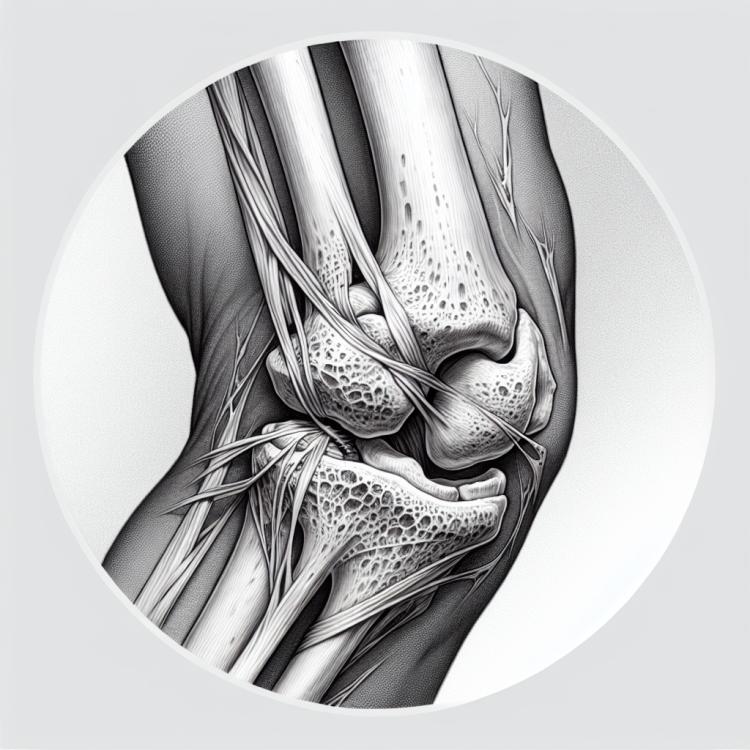
Fracture of the ulna: diagnosis, treatment, and rehabilitation
- Definition of elbow bone fracture
- Factors contributing to an elbow bone fracture
- How does a fracture of the elbow bone manifest?
- The best treatment methods for an elbow bone fracture according to experts
- Methods for diagnosing an elbow bone fracture
- Methods of treating an elbow bone fracture
- Measures for the prevention of elbow bone fractures
- Amazing facts about an elbow fracture
- FAQ
Definition of elbow bone fracture
A fracture of the ulna is an injury to the bone in the area of the elbow, characterized by a disruption of the integrity of the bone tissue in this part of the skeleton. Such fractures can be caused by trauma, falling on an outstretched arm, or hitting a hard surface, and are often accompanied by severe pain and loss of function of the elbow joint. To determine an ulna fracture, X-ray or computed tomography is usually required, allowing for an accurate assessment of the nature and severity of the injury, which is important for the subsequent treatment and rehabilitation plan for the patient.
Factors contributing to an elbow bone fracture
Fracture of the ulna is most often caused by trauma mechanisms that subject the bone to significant loads or directly impact it. Such injuries may include falls onto an outstretched arm, blows to the elbow as a result of accidents or sports injuries. Certain diseases, such as osteoporosis, may also contribute to increased bone fragility and raise the risk of developing a fracture of the ulna.
- Injuries and bruises: Injuries sustained from falls or impacts can cause a fracture of the elbow bone.
- Sports injuries: Increased activity and traumatic sports can raise the likelihood of a fracture.
- Osteoporosis: Decreased bone density increases the risk of fractures, including fractures of the elbow bone.
- Metabolic disorders: Certain medical conditions, such as vitamin D or calcium deficiency, can make bones more fragile.
- Positive family history: Hereditary factors can also play a role in increasing the predisposition to an elbow bone fracture.
How does a fracture of the elbow bone manifest?
A fracture of the ulna can manifest in various symptoms, including pain, swelling, and limited motion in the elbow. Patients may experience severe pain when attempting to bend or straighten the elbow, as well as when touching the injured area. Bruising, swelling, and deformity in the elbow area may also occur, which can indicate the presence of an ulna fracture.
- Pain when attempting to bend or straighten the elbow
- Severe pain when touching the injured area
- Possible appearance of bruises on the elbow area
- Swelling in the injured area
- Limited movement in the elbow
The best treatment methods for an elbow bone fracture according to experts
Experts in the field of orthopedics and traumatology recommend various treatment methods for a fracture of the elbow bone depending on the type and characteristics of the injury. In most cases, treatment involves wearing a cast, fixing bone fragments, or even surgical reconstruction. The main goal of treatment is to restore elbow function and prevent complications such as osteoarthritis or displacement of bone fragments.

Methods for diagnosing an elbow bone fracture
For the diagnosis of an ulna fracture, various methods are used, including radiography, computed tomography (CT), or magnetic resonance imaging (MRI). Radiography is the primary method and allows visualization of the fracture, its type, and character. CT and MRI may be used, especially in cases of complex fractures or when a more detailed image is required for treatment planning.
- X-ray: Visualization of the elbow bone to detect the presence and type of fracture.
- Computed Tomography (CT): Allows for a more detailed image of the fracture and assesses its nature.
- Magnetic Resonance Imaging (MRI): Sometimes used for additional diagnosis of complex fractures or assessment of surrounding tissues.
- Ultrasound examination: Can be used to evaluate soft tissues around the elbow when a fracture is suspected.
- Clinical review and physical examination: The doctor analyzes symptoms, circumstances of the injury, and conducts an examination for preliminary assessment of the presence of an elbow bone fracture.
Methods of treating an elbow bone fracture
- Conservative treatment: includes the inclination and fixation of the ulna using a cast or bone fixators.
- Surgical intervention: may be required for complex fractures to restore the anatomy of the bone and stabilize the fragments.
- Orthoses and splints: are prescribed for support and protection of the elbow after fracture treatment.
- Physiotherapy: rehabilitation is important after treatment, including physical exercises to restore elbow function.
- Individual approach: the choice of treatment method depends on the characteristics of the fracture and may require consultation with a multifunctional medical team.
Measures for the prevention of elbow bone fractures
- Strengthening muscles and bones: Regular exercise, including weight training and balance exercises, helps strengthen bones and muscles, which can reduce the risk of fractures.
- Using protective equipment: When engaging in sports or other activities with an increased risk of injury, it is necessary to use appropriate protective gear to minimize the possibility of fractures.
- Falling from heights: Preventing falls from heights, for example, by using guardrails or handrails, can reduce the risk of fracturing the ulna.
- Careful handling of objects and heavy loads: Avoiding careless handling of objects, refraining from lifting heavy loads, and using proper lifting techniques can decrease the likelihood of injury and fractures.
- Proper nutrition and vitamin intake: A balanced diet rich in calcium and vitamins D and K helps strengthen bones and can assist in preventing fractures.